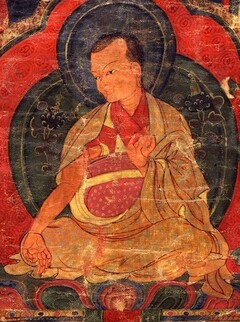Biography Series
English (56) | Español (4) | Français (3) | Português (2) | 中文 (2) | བོད་ཡིག (54)
Translations of various namthar (rnam thar) or biographical works arranged by subject:
Adzom Drukpa
by
Lhundrup Tso
Böpa Tulku Dongak Tenpe Nyima
Chögyal Puntsok Rigdzin
Chokgyur Dechen Lingpa
Ḍākinī Treasury
Drakkar Lobzang Palden
Dudjom Lingpa
Golok Serta Rinpoche
Guru Jober
Guru Padmasambhava
revealed by Dudjom Lingpa
by
Tāranātha
Gyurme Jamyang Tenpel
Jamgön Kongtrul
Jamyang Khyentse Chökyi Lodrö
Jamyang Khyentse Wangpo
Jigme Lingpa
Khenpo Kunzang Palden
Khenpo Pema Vajra
by Wangchen Dargye
